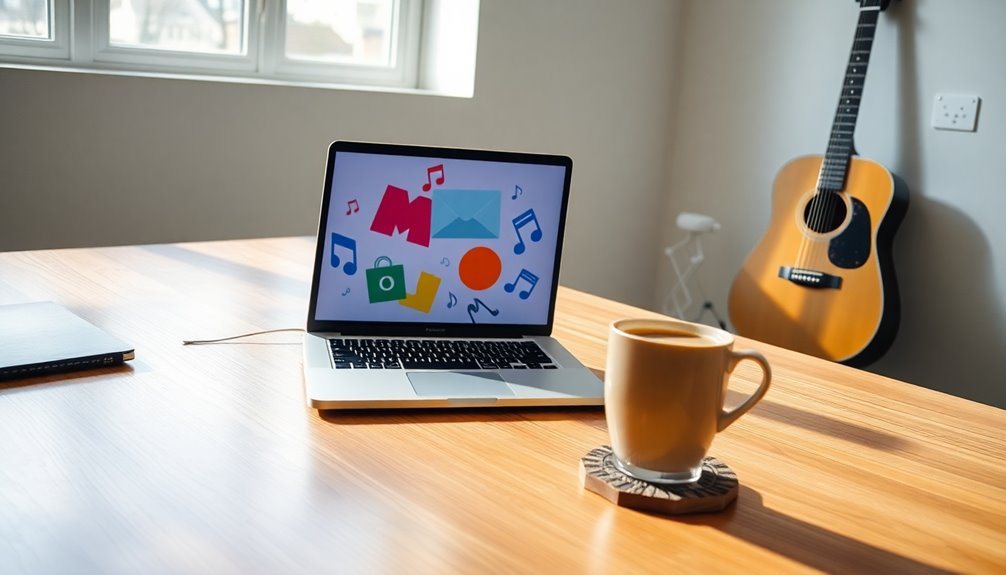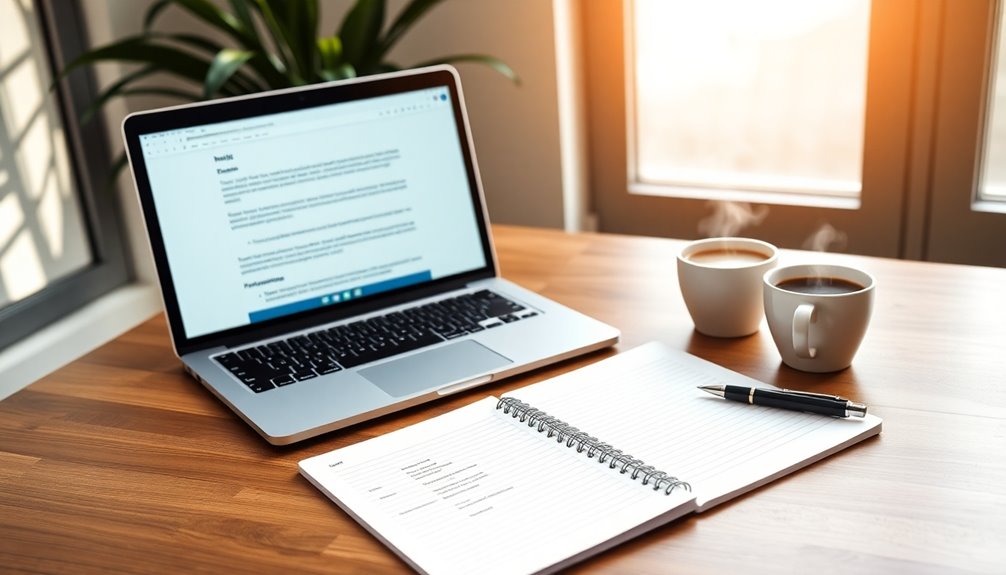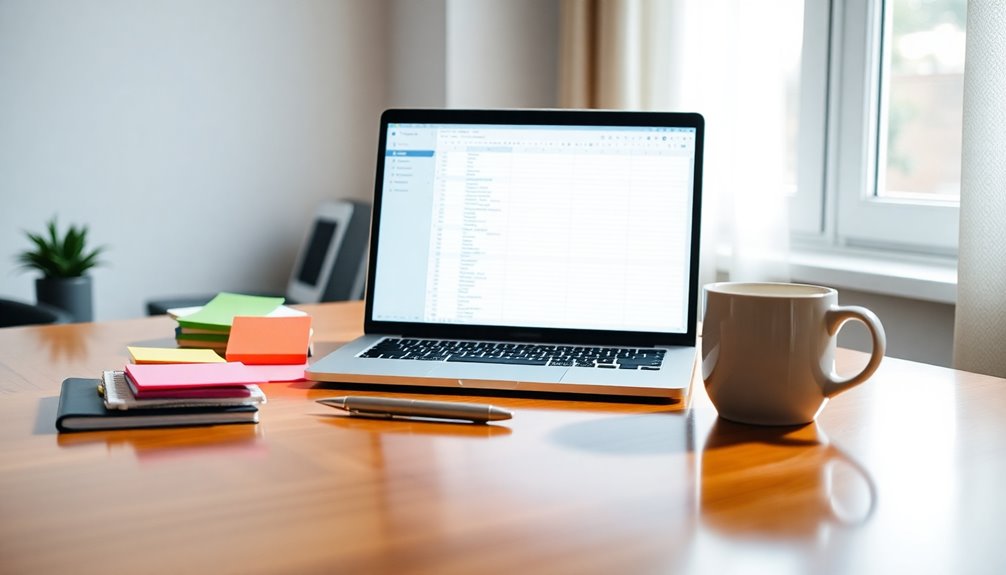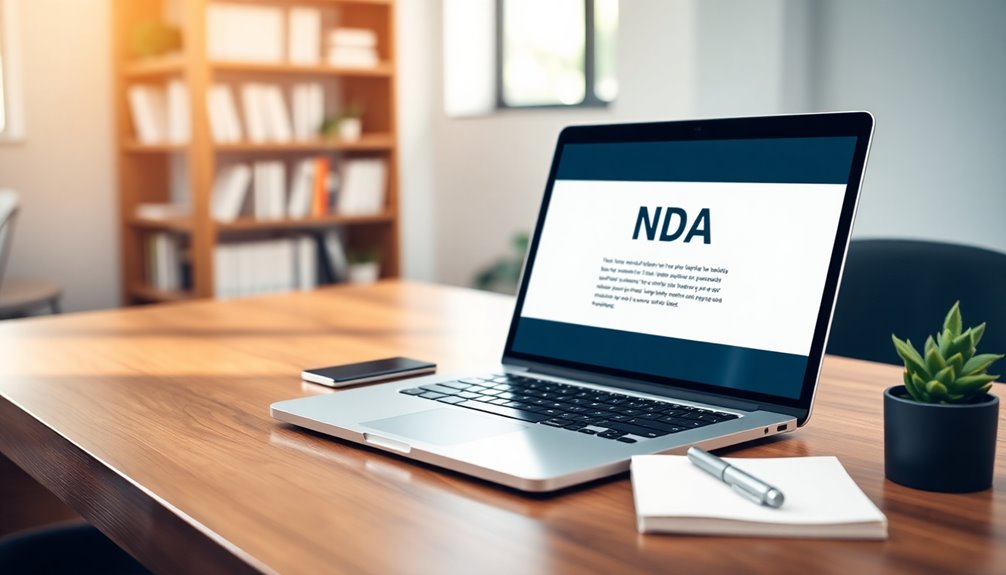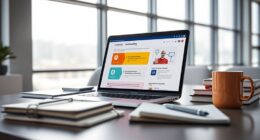To craft a music booking email that gets gigs confirmed, start with a clear subject line and personalize it by addressing the recipient by name. Include essential details like the event date, time, and venue while keeping your language concise. Use bullet points for skimmability, and make sure to highlight your unique selling points and past performances for credibility. Don't forget to add a strong call to action, urging the recipient to confirm their booking. Delivering clear, well-structured information will boost your chances. Stay tuned for more tips to enhance your email's effectiveness!
Key Takeaways
- Use a clear subject line like "Booking Confirmation for [Event Name]" to ensure immediate recognition and improve open rates.
- Personalize the greeting by addressing the recipient by name and expressing appreciation for their consideration.
- Clearly outline essential event details, including date, time, venue, and any special requirements to avoid confusion.
- Include a concise summary of agreed terms, such as payment details and cancellation policies, for transparency.
- End with a strong call-to-action, encouraging the recipient to confirm the booking or ask additional questions.
Introduction
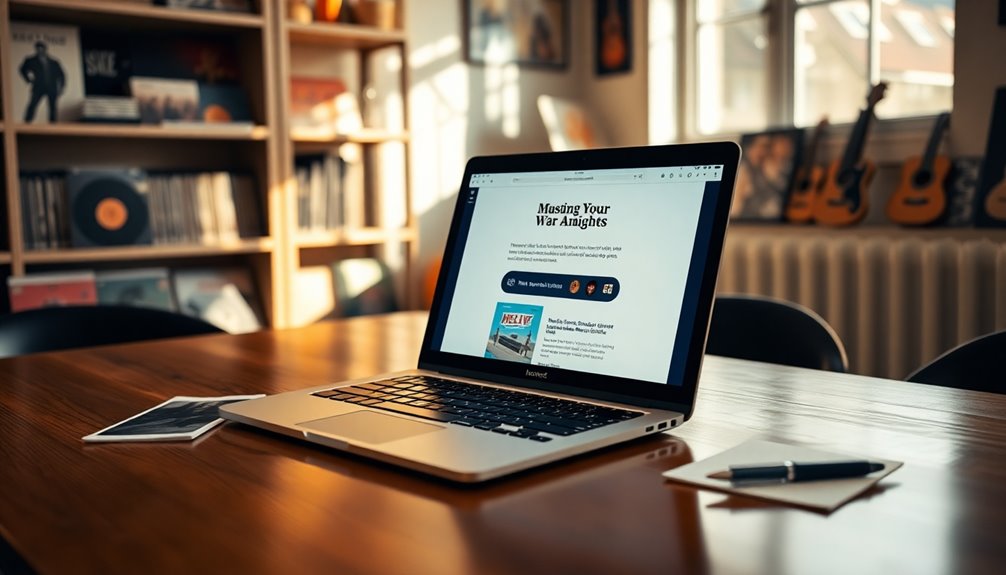
Crafting an effective music booking email is crucial for making a strong first impression. Start with a clear subject line that grabs attention and stays under 60 characters. This helps your email stand out in crowded inboxes.
Next, focus on personalizing the introduction. Address your recipient by name and mention any mutual connections or past events. This builds rapport and makes them more likely to consider your offer.
In your email, include an order summary that outlines essential event details like date, venue, and contact information. This not only provides clarity but also showcases your professionalism.
Using concise language keeps your message readable, while engaging language captures their interest. Avoid jargon and fluff; get straight to the point.
Additionally, ensure you're incorporating consistent branding throughout your email. The tone and style should reflect your artist's identity, reinforcing a positive impression of your professionalism.
When you combine these elements into your music booking email template, you create a compelling message that resonates with potential clients, increasing your chances of securing that gig.
Boosts Artist Credibility Instantly
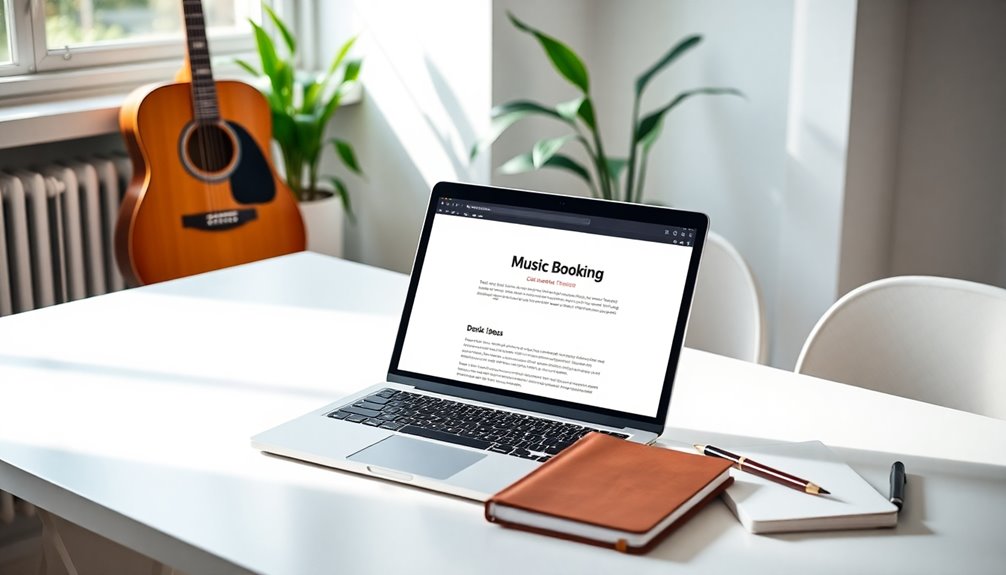
A strong music booking email instantly boosts your credibility as an artist. When you utilize a well-crafted music booking email template, you present yourself as a professional, making you more appealing to venue owners and event organizers.
Personalization plays a key role here; addressing the recipient by name and referencing past interactions can significantly increase your response rates and build rapport. Additionally, understanding the importance of high-quality equipment can help you communicate your professionalism effectively.
In your email, include clear and concise information about your performance history and unique selling points. This not only enhances your artist credibility but also highlights the value you bring to potential gigs.
Make sure your email is visually appealing and consistent with your branding, reflecting your commitment to quality in a competitive industry.
Furthermore, providing links to previous performances, media coverage, or testimonials serves as social proof. These elements can further establish your credibility, reassuring venue owners that you're a reliable choice. Moreover, just as coffee can improve cognitive function, a well-thought-out email can enhance your clarity and effectiveness in communication.
Engaging Call-To-Action Button

When you're reaching out to potential venues, an engaging call-to-action (CTA) button is crucial for prompting immediate responses. Use action-oriented language like "Book Now" or "Confirm Your Gig" to create a sense of urgency. Phrases such as "Limited Slots Available – Act Fast!" can motivate recipients to take action sooner rather than later.
Make sure your CTA stands out visually by employing contrasting colors and larger font sizes. This visual contrast will capture the recipient's attention and drive clicks. You can elevate engagement further with a personalized CTA; referencing the recipient's name or specific event details helps create a connection that encourages action.
Positioning the CTA in multiple places within your email—at the beginning and the end—ensures recipients encounter this prompt no matter how they read through the content. This strategy not only boosts email engagement but also reinforces your message.
Crafting a Booking Confirmation Email

Following up after securing a gig, sending a well-structured booking confirmation email sets the tone for a successful partnership. Start with an engaging subject line that captures attention, ensuring your email stands out in the client's inbox.
Use a personalized greeting to make the recipient feel valued, expressing your appreciation for their booking.
In the body of your email, clearly outline the essential details, including the event date, time, venue, and specific performance requirements. This clarity helps both you and the organizer stay aligned.
Include a concise summary of the agreed terms, such as payment details and cancellation policies. This transparency is vital for building trust and preventing misunderstandings later.
Don't forget to incorporate a clear call-to-action, prompting your client to confirm the booking or request any additional information needed. This step keeps communication flowing effectively and reinforces a positive client relationship.
Pro Tips for Maximizing Impact
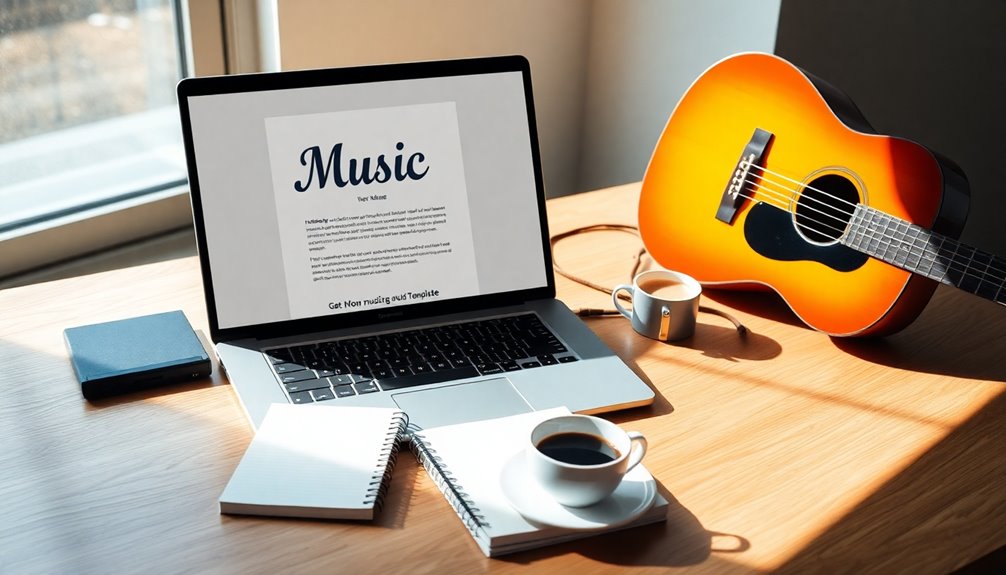
To maximize the impact of your music booking emails, focus on personalization from the start. Using personalized greetings can significantly enhance engagement and response rates, so take the time to address each recipient by name.
Next, craft a concise subject line under 60 characters that clearly states the purpose of your email. This straightforward approach is more likely to catch the attention of busy event creators.
Maintain a professional tone throughout your email, ensuring consistent branding that reinforces your legitimacy and aligns with your music brand.
Clearly outline your performance offerings, including any unique selling points like VIP packages or exclusive experiences. This helps differentiate you from competitors and entices potential clients.
Common Mistakes to Avoid

Crafting an effective music booking email can feel like walking a tightrope, and avoiding common mistakes is crucial for success. One major pitfall is using overly generic subject lines. Instead, create personalized and attention-grabbing phrases to boost open rates by up to 45%.
Your email body should be concise and skimmable, ideally under 200 words. This helps the recipient focus on essential information. Don't forget to include important event details like date, time, and location; missing this info can lead to confusion and lost interest.
When it comes to call-to-action buttons, steer clear of vague phrases. Use clear, action-oriented language that prompts immediate responses. For example, instead of "click here," try "book your gig now!"
Also, don't send emails without proper testing. A/B testing subject lines and email formats can reveal the most effective strategies for engagement and conversion. Additionally, user experience plays a critical role in determining how recipients interact with your emails, so ensure your content is well-structured and visually appealing.
Booking Confirmation Email Example
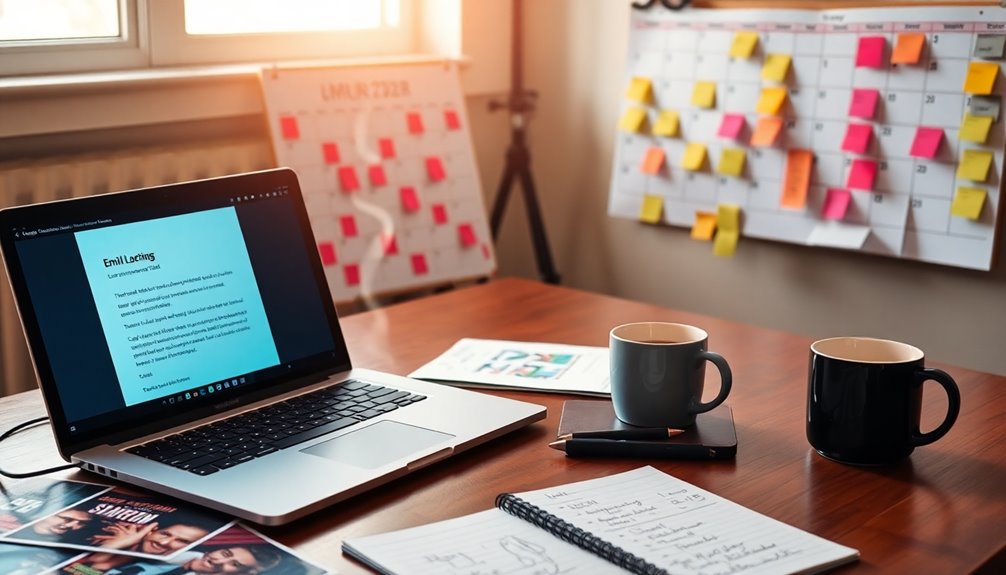
When you've secured a booking, sending a prompt confirmation email is essential for maintaining professionalism and trust. A well-crafted email template can make this process smoother.
Start with a clear subject line that includes the event name and states "Booking Confirmation." This helps your recipient easily identify the email amidst their inbox.
In the body of your email, personalize it by addressing the recipient by name and including a warm introduction. This establishes a connection and builds trust.
Next, outline the essential event details: the date, time, venue, and artist performance specifics. This clarity ensures both parties are on the same page.
Don't forget to include an order summary and a unique confirmation number. These elements serve as proof of booking and enhance the professionalism of your communication.
Lastly, aim for prompt delivery of your booking confirmation email. Delays can lead to skepticism and uncertainty, undermining the trust you've built.
Final Thoughts

Sending a booking confirmation email is just the beginning of a successful partnership in the music industry. To make your emails stand out, you need to use effective booking confirmation email templates.
Start with clear subject lines that quickly convey the purpose, capturing your recipient's attention right away. Personalization in your introduction helps foster a connection, making it more likely they'll respond positively and confirm the gig.
Ensure you include all relevant information about the performance, such as the date, venue, and any specific requirements. This clarity helps recipients make informed decisions quickly.
When crafting your body copy, keep it concise and engaging—aim for under 200 words to improve readability and maintain focus on essential details.
Don't forget to incorporate a strong call-to-action (CTA). Phrases like "Confirm Your Booking Now" can encourage immediate responses and enhance your chances of securing the gig.
Frequently Asked Questions
How Do I Find the Right Email Contacts for Booking Gigs?
To find the right email contacts for booking gigs, start by researching venues, checking their websites, and looking for contact information. Networking with other artists and attending local events can also help you connect with key people.
What Should Be Included in My Email Signature?
In your email signature, include your full name, contact number, and professional title. Don't forget to add links to your website and social media profiles, ensuring recipients can easily connect with you and access your work.
How Often Should I Follow up on My Booking Email?
You should follow up about a week after your initial email. If you still don't hear back, try again in another week. Keep it friendly and concise; persistence shows your interest without being pushy.
Can I Use the Template for Different Types of Events?
Absolutely, you can adapt the template for various events. Just tweak the details to fit each occasion, ensuring your message resonates with the specific audience and highlights what makes your event unique. Keep it engaging!
What Is the Best Time to Send Booking Emails?
The best time to send booking emails is early in the week, preferably Tuesday or Wednesday mornings. This timing ensures your message stands out, allowing recipients to consider your proposal before the weekend rush.
